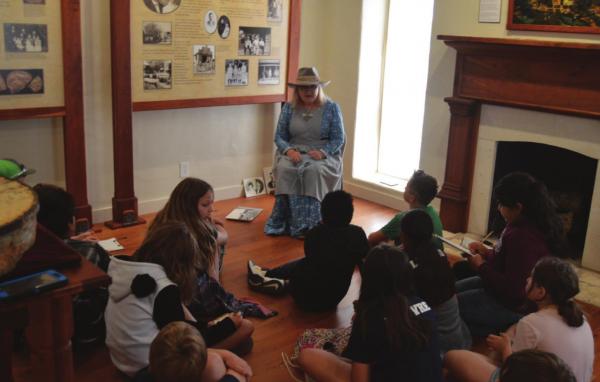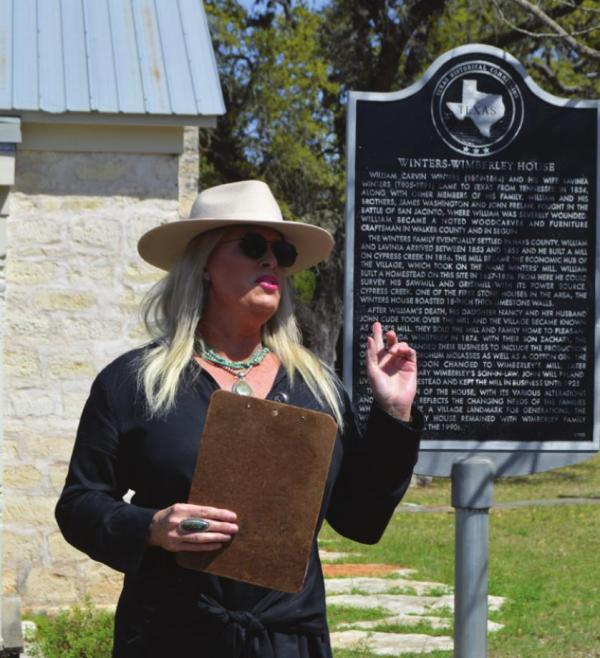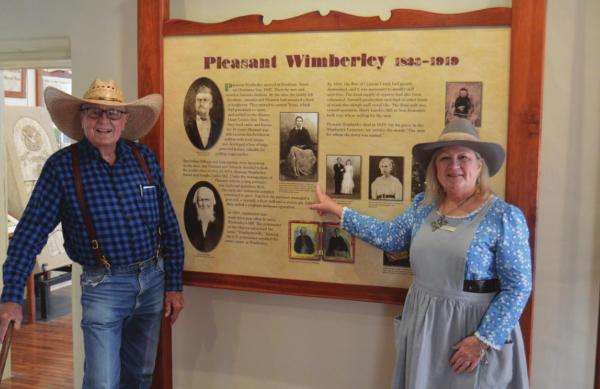Learning the history of Wimberley
You can’t say you’re from Wimberley until you’ve spent time in the home where it all started. The Wimberley View’s newest staff reporter has checked that item off the Wimberley Must-Do list. Read about his experience as he learned the history of Wimberley – just like all of the students in our fourth grade classes. This is a multipart series helping Colton McWilliams learn to be a local.
Fourth grade was a fantastic time for me.
Playing videos on my Playstation 2, watching Power Rangers on Saturday mornings, and learning about Texas History in my elementary school, which was my favorite subject.
So low and behold when the Wimberley Institute of Cultures invited me to their annual Jacob’s Well fourth grade field trip to the famous Winters-Wimberley house, I was really interested in knowing about how Wimberley was first started.
But it also represented an opportunity to know more about the Wimberley Institute of Cultures and their work to preserve Wimberley’s history.
As the fourth graders and I entered the Winters-Wimberley House, we were met by William Carvin Winters himself, portrayed by David Glenn.
“I came here in 1860 from Tennessee,” Winters said. “There were 14 of us that came from Tennessee to Texas, and we lived just north of Houston. About that time, we were having trouble with our government.”
It was here Winters found himself involved with the Texas Revolution fighting with Sam Houston against General Santa Anna and the Mexican Army.
“I was a part of the Texas Army, and we were trying to run away when we found ourselves at San Jacinto,” Winters said. “The battle took place there on April 21, 1836… The Mexican Army thought the battle was going to be the next day, and they were resting and taking a siesta in preparation for the battle. We were down there, snuck up and attacked them by surprise.”
As a Texas History buff, I have great knowledge of the Texas Revolution and the Battle of San Jacinto. What I didn’t know was that one of the few injured soldiers was Winters, who was shot in the leg by a musket.
“I was at San Jacinto with my two brothers,” Winters said. “We made the charge and while we were charging, I caught a musket ball to the knee and was badly injured. After the battle was over and the Texans had won, they had started looking for me and found me lying on the battlefield, which took a week to recover from my injury.”
Because Winters was a part of the Texas Army and fought in the Battle of San Jacinto, he was rewarded with a land grant.
“When you joined up with the Texas Army, you got 320 acres of free land,” Winters said. “If you were at the Battle of San Jacinto you got 640 acres of land. If you were like me and were severely injured at the Battle of San Jacinto, you got a deed of land, which was seven miles by seven miles of land.”
It was here I learned how Winters, along with Jacob de Cordova, traveled to the Wimberley Valley where they came across Cypress Creek.
“Trying to figure out what I was trying to do with some of my land, and I started to look around for a new place,” Winters said. “I ended up finding Cypress Creek and its headwaters at Jacob’s Well. Water was a big thing that was needed not only as a resource but for power as well.”
With Cypress Creek powering his Mill, Winters established his business as a woodcarver and eventually built the house that currently stands to this day.
But if Winters established the place that eventually became Wimberley, why isn’t Wimberley called Winters?
Fortunately the question was answered through the form of Amanda Wimberley played by Martha Barchfield.
After Winters died of a heart attack, his daughter married John Cude who bought the mill, renaming it from Winter’s Mill to Cude’s Mill.
It was there when we talked about the man who the town is named after in Pleasant Wimberley.
How both Amanda Jackson and Pleasant Wimberley met was fascinating. Amanda was a part of the Runaway Scrape with her family, which was when people fled as the Mexican Army as Santa Anna moved north. They eventually landed in Brenham where Wimberley was raising longhorns and horses.
After marrying, the couple moved to Walnut Creek.
“He had itchy feet coming from North Carolina,” Amanda Wimberley said. “He still wanted more land and to make more money, so the family moved out near Blanco and Llano and moved to Walnut Creek.”
However Walnut Creek wasn’t the safest place to be with ten children.
“Amanda was thinking, ‘You know, I’m not happy with this’”, Wimberley said. “There are kidnappings, and bandits, and she wanted to move somewhere where they were more comfortable. So Ole Ples said ‘Ok Amanda I’ll do that for you’ and got on his horse and headed to San Marcos.”
However on his way to San Marcos, Pleasant found the Cude’s Mill.
“He looked at the mill and thought ‘I could make a good living here,’” Amanda Wimberley said. “With the mill making corn, flour, wood, and a variety of other things along with 200 acres of land, the water rights and this house.”
With the mill being a much safer place, both Pleasant and Amanda Wimberley helped grow the town so much that eventually the settlement was in need of a post office.
“If you had a post office and you were recognized by the United States, then you were a city,” Wimberley said. “They (citizens) sent an application off to Washington DC and asked for the town to be called Wimberleyville.”
However, in a funny twist, somebody must have thought “Wimberleyville” was way too long of a name and cut the “ville” off the name to just have it be “Wimberley.”
After learning about Pleasant and Amanda Wimberley, the fourth grade class and I walked across the street to Ozona Bank where the original mill was at.
Though it’s sad to see the mill is no longer there, it is quite fascinating to see the evidence of where the mill race was, which was put there to divert water from the creek to power the mill before the water eventually returned back to Cypress Creek. What I didn’t realize was that parts of the old mill race were still intact. The original mill race is now the edge of Mill Race Lane.
To see the mill race and to visualize what the Winters, Cude and Wimberley families did to work the race was a great way to understand why it’s important to keep a landmark just like that alive.
After visiting the mill race and wrangling all the fourth grade students down the road and back to where we started, we were at the final place of our journey at the Zach house.
Being just a couple of feet away from the Winters-Wimberley house, it’s not hard to see why the house was built.
The third son of Pleasant Wimberley, Zachariah, had married Mary Elizabeth, played by Suzanne Gordon.
However, living in the Winters-Wimberley house with so many people under one roof, Mary Elizabeth wanted to move out of the house and into a house of her own.
And to be honest she wasn’t wrong.
“She sees how many people are living in that Winters-Wimberley house and decides she wants her own house,” Mary Elizabeth said. “Things were not going well, so Mary Elizabeth decided to pack her suitcase and walk out.”
It was then Zacharach started building his house, and he made it obvious who he was building the house for.
Now rusted, when the house was originally built it was partially pink.
Looking at a painting of when the house was first built, it was shocking to learn people were painting their house pink and trying to rationalize back in the day that pink was a new trending color.
At the end of the field trip, I felt like I had a firm grasp of Wimberley history even from the fourth grade perspective.
As a history buff, I love learning the history of a new place and piecing together the pieces of what makes this place so special.
It was awesome to see WIC go the extra mile with their fourth grade program to teach this younger generation about Wimberley’s history and help them understand why it is important to know about history.
For the next generation of fourth graders, I hope they have the same amount of fun as I did.
What do you have to do before you can say you’re from Wimberley? Send suggestions for Colton’s next story in the Learning To Be A Local series by emailing [email protected].




